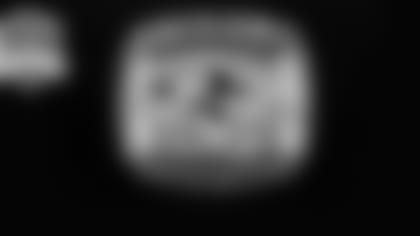The marching band has been part of the football fabric in Baltimore for the last eight decades.
Since the Baltimore Colts Marching Band was established in 1947, the group has continued to operate regardless of whether the city even had a professional football team. The group has actually survived the loss of football franchises twice (1951-52, and 1984-1996), and the marching band continues to have an important place in Baltimore's football landscape.
The future of the band came under the most uncertainty in 1984 when the Colts left for Indianapolis. But current band President John Ziemann led a mission to keep the group together until pro football returned to Baltimore, and those efforts were chronicled in the ESPN 30 For 30 documentary, *The Band That Wouldn’t Die. *
While they didn't have a team, the band did everything it could to get football back to the city. The band performed a concert on the steps of the Maryland State House in March 1987,* *showing their support for the new stadium project for the Orioles and eventual NFL franchise.
Maryland Governor William Schaefer said at the time, "The Colts' band made the difference and turned the tide in winning the vote for the new stadium complex."
Ziemman's efforts to keep the band together worked, and when Art Modell moved his franchise to Baltimore in 1996, the owner reached out to the Colts' band to get them on board.
"We stayed the Baltimore Colts' band for the first two years of Ravens history," Ziemann said.
The band played the Colts' fight song those first two years, and still wore the old Colts uniforms.
But that changed in 1998.
The Baltimore Colts band held its final event in July 1998, when the ESPN Zone opened in Baltimore's Inner Harbor. When football season began that fall, they had officially become Baltimore's Marching Ravens.
They had new uniforms and a new fight song. The Pro Football Hall of Fame has the original uniforms from that first season of the Marching Ravens.
The band is still in place today as an important piece of the Ravens and the city's football history.
The marching band has been part of the football fabric in Baltimore for the last eight decades.
Since the Baltimore Colts Marching Band was established in 1947, the group has continued to operate regardless of whether the city even had a professional football team. The group has actually survived the loss of football franchises twice (1951-52, and 1984-1996), and the marching band continues to have an important place in Baltimore's football landscape.
The future of the band came under the most uncertainty in 1984 when the Colts left for Indianapolis. But current band President John Ziemann led a mission to keep the group together until pro football returned to Baltimore, and those efforts were chronicled in the ESPN 30 For 30 documentary, *The Band That Wouldn’t Die. *
While they didn't have a team, the band did everything it could to get football back to the city. The band performed a concert on the steps of the Maryland State House in March 1987,* *showing their support for the new stadium project for the Orioles and eventual NFL franchise.
Maryland Governor William Schaefer said at the time, "The Colts' band made the difference and turned the tide in winning the vote for the new stadium complex."
Ziemman's efforts to keep the band together worked, and when Art Modell moved his franchise to Baltimore in 1996, the owner reached out to the Colts' band to get them on board.
"We stayed the Baltimore Colts' band for the first two years of Ravens history," Ziemann said.
The band played the Colts' fight song those first two years, and still wore the old Colts uniforms.
But that changed in 1998.
The Baltimore Colts band held its final event in July 1998, when the ESPN Zone opened in Baltimore's Inner Harbor. When football season began that fall, they had officially become Baltimore's Marching Ravens.
They had new uniforms and a new fight song. The Pro Football Hall of Fame has the original uniforms from that first season of the Marching Ravens.
The band is still in place today as an important piece of the Ravens and the city's football history.



















